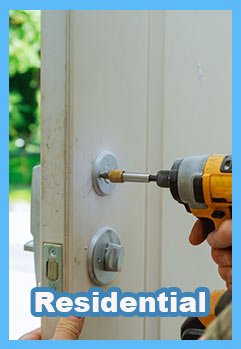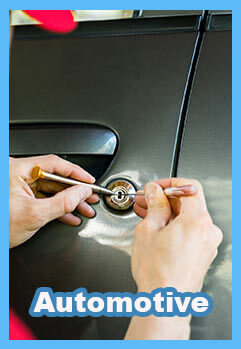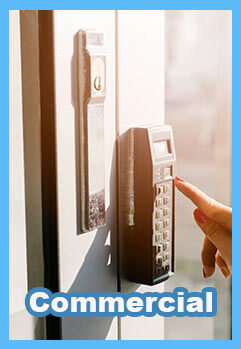Why Panic Bars are Necessary for Business Safety
Panic bars are a door opening mechanism that you have likely seen in public spaces, such as libraries, schools, and business buildings. These devices are also referred to as crash bars or push bars. Even though you may be familiar with these devices, there are likely several things you do not know about them. When it comes to the history of panic bars and their role in building safety, there is a lot to learn. In this article, you will find out more about how panic bars work, the morbid history behind their invention, as well as how to go about installing panic bars for your business to help increase safety.
How Panic Bars Work
Panic bars sit horizontally across doors. They come in several different kinds of styles and designs. For the most part, however, they all work the same. To open a door that has a panic bar, one simply needs to push the bar towards the door and the door will automatically swing open. Other types of door handles are not nearly as efficient, especially if multiple people are attempting to exit a building all at once.
The main purpose of panic bars is to increase the speed of evacuation in the event of a fire or other kind of building disaster. Panic bars are mandated by law for businesses and other public spaces that hold a certain occupancy or work with hazardous materials. Without them, evacuation can be slowed and potentially lead to injury or death. Panic bars have helped save lives and are the reason building evacuations can be carried out smoothly without the risk of stampedes or bottle-necking effects that can occur when too many individuals attempt to exit a building all at once.
Panic Bars: A Brief History
Three major catastrophic events occurred between the late 1800s and the early 1900s which ultimately led to the invention and legal requirement for panic bars. Businesses everywhere have been made safer due to the influence of these three events and their mark on history.
The first event happened in 1883 in Sunderland, England. 183 children perished following a theater performance at a venue known as the Victoria Hall. When the performers on stage promised the children that whoever reached the theater exit first would receive a prize, a stampede broke out among the children. To make matters worse, the theater had one exit that was partially bolted shut, making it so only one child could pass through at a time. This inevitably led to injury and death among the children attending that day and was one of the major events that influenced Robert Alexander Briggs to patent the panic bolt in 1892.
The second event occurred in the United States in 1903. To this day, The Iroquois Theatre fire in Chicago remains the deadliest single-building fire to ever occur in the U.S. This particular disaster was the result of overcrowding during a matinee performance at the theater. A lack of exits also contributed to the death toll. After a stage curtain caught fire, patrons were left scrambling towards the only exit and many lost their lives due to poor building safety standards, lack of exits, and the absence of panic bars.
The final tragedy that influenced panic bar laws also occurred in the United States, just five years after the Iroquois Theatre fire in 1908. The Lakeview School fire in Collinwood, Ohio resulted in the loss of 172 students, 2 facility members, and one rescuer. When a fire broke out in the school from an unknown source, occupants inside of the school rushed to one of the two exits in the school. Since one of the exits was quickly blocked by the fire, students and teachers only had one option for leaving the building. The only exit was an inward swinging door, only adding to the problems that led to the high death toll. After this incident, public outcry eventually influenced government entities to establish mandatory building safety laws that require public spaces to have a certain number of exits, as well as panic bar installations.
Always Work with a Locksmith for Panic Bar Installations
Now that you understand the history that led up to the invention of the panic bar and their importance in building safety procedures, now it is time to ensure your own business has panic bars. The best way to assess whether or not your business needs panic bars is to work with a local locksmith in your area. Not only will they be able to determine if your building meets that requirements for panic bar safety laws, but a locksmith can also help properly install and set-up your panic bars. These are an important safety feature that should never be looked over. Your business could potentially face legal action if panic bars are absent on your property, especially if someone gets hurt while trying to evacuate. Contact a local locksmith in your area now to discuss receiving panic bar installations for your business.

For More Info.
Call us at (770) 278-9584
Main Street Locksmith, LLC is proud to provide services for those looking for automotive, residential, emergency and commercial solutions in Alpharetta.







